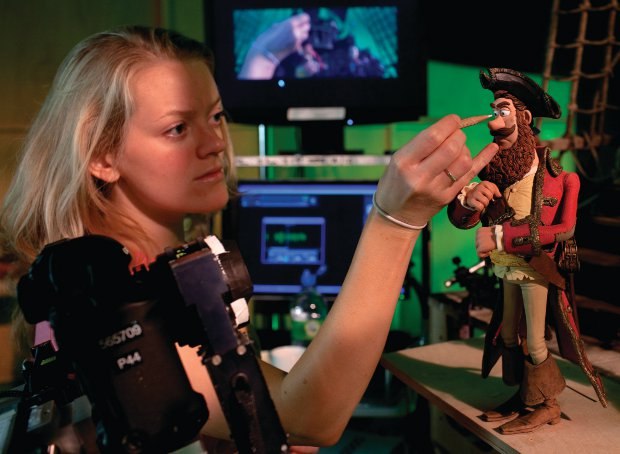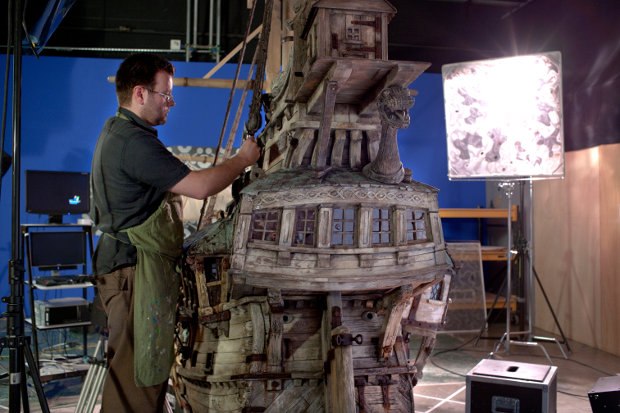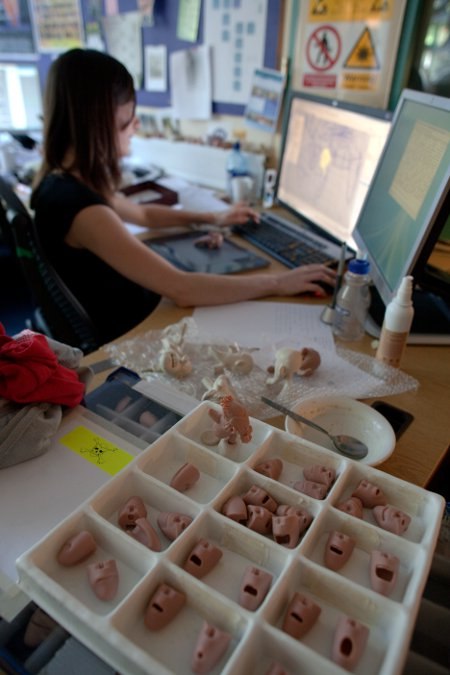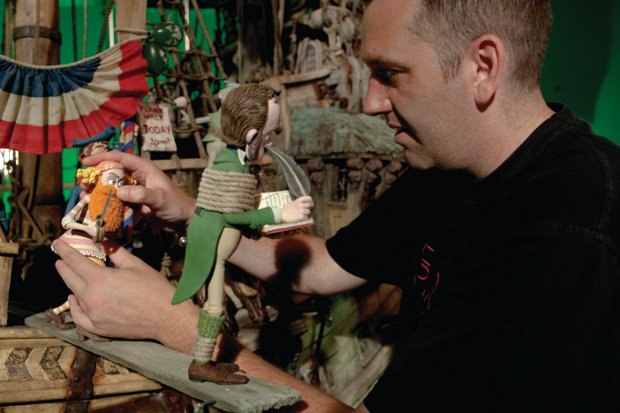Peter Lord gets in the swashbuckling mood for AWN.
One glimpse of The Pirates! Band of Misfits and you can instantly tell that Aardman has gone way beyond Wallace & Gromit. The legendary Bristol stop-motion studio has fully embraced the digital age: the puppets are slicker and rapid prototyped with replaceable mouths, the sets are more lavish (the pirate ship is breathtaking and Victorian London is a marvel to behold) and the VFX is more authentic (the CG water is a revelation).
What this means is that Aardman isn't standing still while Laika raises the bar in Portland and Tim Burton and Henry Selick continue to push stop motion in their own artistic ways. Therefore, The Pirates is polished and tactile (yes, the 3-D is pleasing as well) and very witty in Aardman's trademark way. It's still about social misfits and idealistic dreamers longing for fantastical adventures to escape their humdrum lives.
"The digital pipeline has been liberating for me," admits director and Aardman co-founder Peter Lord. "Our whole day of shooting used to consist of sending the film to the laboratories and back. Now you can move on a shot any time of day or night. But shooting digitally and with confidence on green screen backgrounds is wonderful. I really enjoy the CG enhancements. We have the CG team in-house so we're all under the same roof and it feels like a team. But the water is the obvious thing. The fact that we can take a big ship, which is made of wood and metal and string and canvas, and make it move as if it was at sea and then put the sea around it digitally afterwards is absolutely amazing.
"We spent a lot of time trying to get the sea sufficiently stylized so it looked like it belonged with the models. There's nothing I like more than the classic pirate image of a great, big ship thrashing into a wave, sinking, splashing and rising above. Our model ship is the real star of the movie. It's a beautiful object [14 feet long, 15 feet high and 770 pounds]. It's actually two ships that have been badly stitched together. There was some crooked, backstreet shipyard that rather carelessly stuck two ships together. The front part is from 1820 and the back half is from 1680. But that's part of the backstory that's never discussed."
But what can be discussed is the game-changing rapid prototyping that's become an industry standard since Coraline: Replaceable puppet mouths along with heads are made by an in-house department at Aardman. These are computer designed and printed in resin (complete with teeth and tongue) via a 3D printer. Thus, the animators make the characters speak by using mouth replacements that are attached to the head by magnets. More than 6,818 puppet mouths were created for "The Pirates," including 1,364 for the Pirate Captain (voiced by Hugh Grant) alone.
"Obviously, it's a very different look than Wallace & Gromit," Lord adds. "With pirates they need gold braid, belts, buckles, sashes, scabbards, lace. And you couldn't do that in clay or anything like it. So I didn't try to pretend that it was clay. I went for a different aesthetic entirely."
Indeed, rapid prototyping has been a godsend for the animators. "We tried this new approach, which was to make resin," explains animator Ian Whitlock. "With the sheer number of characters in this film and the fact that they're more detailed, it was far easier to print these out. What would happen is we would take the head off but keep the body on set. And I could work on the brow and change the expressions of the mouths. Even the eye lids are made of the same material. With the Pirate Captain, we wouldn't have the beard but the main face and the moustache, which would be cast as blank.
"From there, we would make extreme expressions, which would then get scanned into the computer so that somebody could make about 10 different mouth shapes. And from that point, I would be handed them over so I could build this set of mouths. For the captain, there are about 257 mouths. And that's for the dialogue and the expressions. Obviously, you can't manipulate as you would with clay, so you have to remake them. So I would take the blend shapes and then move them in the computer and those would work toward whatever mouth you want to put on."
Meanwhile, from the outset, it was clear that The Pirates would need to rely on VFX to fill in the gaps to animate what couldn't be done by hand. "About half the shots were pretty simple for us -- adding sky and background," says Andrew Morley, the VFX supervisor. But others involved much more complicated procedures, such as building much of Blood Island (where pirate debauchery takes place early in the film). "They built the harbor in the shop, but we had to turn that into a full island with a volcano in the distance," Morley adds. The VFX team also animated several characters in the distant background.















